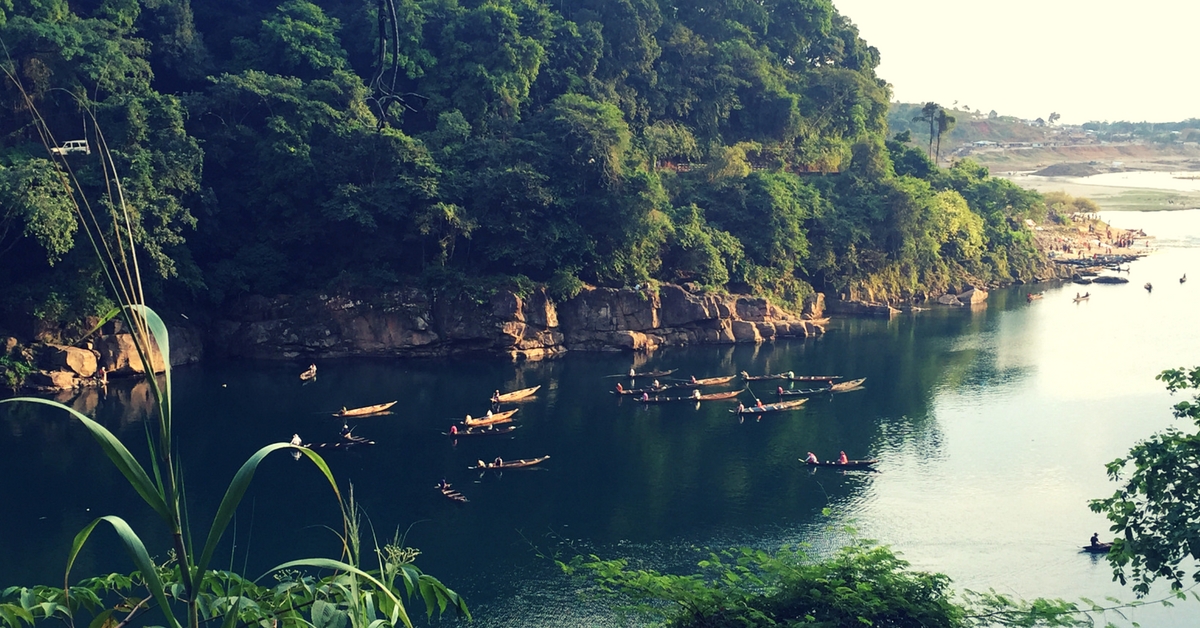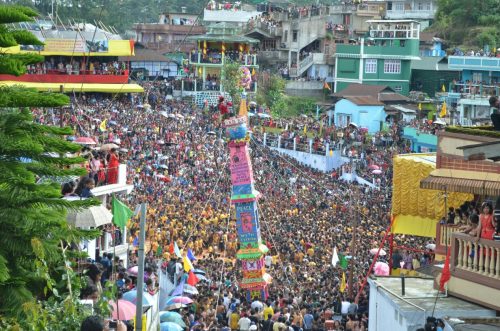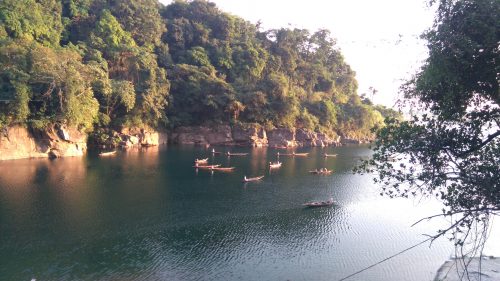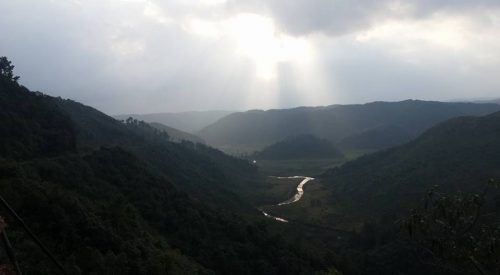TBI Blogs: A Look at How Shillong’s Nadi Festival Used River Systems to Mediate Policy Between 5 Countries
Initiated by the Asian Confluence, the Nadi Festival witnessed the participation of 5 countries with common river systems. With the river as a protagonist, the countries discussed policy ideas, and a shared legacy of dialects, cuisines, and arts and culture.

Initiated by the Asian Confluence, the Nadi Festival witnessed the participation of 5 countries with common river systems. With the river as a protagonist, the countries discussed policy ideas, and a shared legacy of dialects, cuisines and arts and culture.
Maps draw up a political boundary, but people living for generations close to nature, at the grassroots, know only of a confluence of culture, trade and co-existence, celebrated along the rivers they live by.
Come July and the rains insistently establish their significance in the lives of people in North East India, our most biodiverse landscape. The festival of Behdeinkhlam, celebrated by the indigenous faith in Meghalaya, seems in tune with the monsoon’s build up. Drum-beats drive the festivities as offerings are made to ancestors and rituals that venerate nature’s incarnates with folklores, take place. Processions dance down the hillside in a riverine fashion with tower-like structures called Rot or Raths, only be immersed in culmination at the sacred pool at Jowai.
This sacred pool refers to the significance that water plays as an equalizer across the nation, if not the world.

As if in sync, Meghalaya’s capital city of Shillong hosted the ‘Nadi Festival’ that brought together five neighboring nations around the north-east of India on the 15th and 16th of July.
Initiated by the Asian Confluence, it showcased a dialogue and display by speakers, artists and observers from Bangladesh, Bhutan, Nepal, Myanamar and India, to cast the river as the protagonist to mediate policy, perceptions and mostly importantly, possibilities.
For a mind from India’s commercial capital, Mumbai, there was a disruption of set misnomers on region, its peoples and relationships.
To begin with, for a geographically sound person, it becomes increasingly difficult to adjust to the local reference of being from the ‘mainland.’
Socially, one understands, as the region remains insular till date and draws more in common from its soft borders with neighbouring Bangaldesh, than with Bengal. They share tribes, they share landscapes, their histories and more so, they continue to share the rivers.
At a ‘Nadi’ session, an ex-bureaucrat from Nepal, and who is now a journalist, threw statistics as reference points: India and Nepal share 6,000 riverine systems, India and Bangladesh 54, and so on.

When one considers this volume of riverine systems, we are also talking of an amazingly rich harvest of fusing culture, craft and trade developed over generations.
In the last century, with colonial collapses, borders were drawn up to cast political barriers of differences compromising a shared gene-pool of history and narratives.

As you visit Meghalaya’s Dawki-Tamabil border crossings along the Umngot river between India and Bangladesh one feels the resonance of these links in the slipping dialects, in the tastes of traditions and in the planting of the idea that riverine connectivity can sustain relationships and create an environment for friendly trade and tourism between the North-East region and our surrounding neighbours.
As most of the visitors from Bangladesh crossed this point, these thoughts might have coincided with those of the organisers and collaborators of the event – the Government of Meghalaya and the Maulana Abul Kamal Azad Institute of Asian Studies.
The opening Policy Dialogues drew the symbolic presence of state heads like the Chief Minister of Meghalaya, Dr. Mukul Sangma; Mizoram Chief Minister, Lal Thanhawla;Bangladesh Tourism and Civil Aviation Minister, Rashed Khan Menon; Bangladesh Minister of State for Foreign Affairs, Shahriar Alam; Former Water Resources Minister from Nepal, Dipak Gyawali; Former Ambassador of Bhutan to India, Dago Tshering; High Commissioner of Bangladesh in India, Syed Muazzem Ali, and High Commissioner of India to Bangladesh, Harsh Vardhan Shringla.
The commonalities between the north-eastern states and neighbouring countries through the rivers of the region offered potential highways of engagement through portals of the past, when there existed an everyday exchange of culture and trade among the local people.
In support, Dr. Sangma said: “Every livelihood activity revolves around sources of water and can have both, a negative and a positive impact on the ecosystem. Therefore, it is important to ensure that everyone who is in an upstream area understands the ramification of their activities. To ensure that the hydrology of these rivers remain sustainable, we also need to see that the State is capable of taking care of the sustainability of the livelihood of the people who are in upstream and catchment areas.”
However the true spirit of the event came in the interactions between long-time friends reuniting with real-time stories both, re-lived and new, like when Rathindra Roy, Ex-UN official from India, who was facilitating the stakeholder session on institutional building met Shaid Hussain Shamim, an entrepreneur-activist of social movement through the handicraft and ecotourism at Prabartana in Bangladesh. Their dialogue became a testimony to the linkages and commonalities that bind the region and its diaspora. As their conversations drew in friends from across the borders, new friendships developed over shared happiness at progresses and horrors of loss.
Similar pictures were drawn at separate stakeholder meetings on Institutional Building, Tourism and Media, along with live exhibitions on yarns and dyes, cultural programs, crafts bazaar and performing arts of the border areas of Bangladesh and the NE region.
In these events, the inspiration for Sabyasachi Dutta, Director, Asian Confluence was evident, as was an understanding of his statement:
“The role of the ‘third space’ to complement efforts of the first space led by government and the second space led by industry, has become the need of the hour. Credible civil society organizations, academia, individual entrepreneurs and grassroots level organizations must be mobilized to lead to an organic growth bottom up.”
And in this, one might just discover that sitting on the fence or rather, the border, is not painful.

Last year, Shillong hosted the ‘Indigenous Terra Madre,’ bringing together 159 tribes from around the world that highlighted the significance of grassroots knowledge and its balanced equation with the environment.
Phrang Roy, Chairman of NESFAS, the organisers of the event, was also at the stakeholders’ meet at Nadi and said, “As one travels through the traditional communities one sees the impact of the river from the very name of some villages to their link to the world outside. The same under current is reflected in their local food systems and the agro-biodiversity as a connecting rod to our environment, our health and nutrition, our relationships and celebrations leading to our wellbeing.”
As India follows the world into its urban future these forgotten grassroots might be the havens for discovering resolutions on man-nature conflict, climate change adaptation and cross border peacekeeping, as the people here have time-tested value chains which shout out for discovery like cascades making a gigantic splash when waters from these hills, meet the plains.
You can support grassroots communities by donating here
Like this story? Or have something to share? Write to us: [email protected], or connect with us on Facebook and Twitter (@thebetterindia).
If you found our stories insightful, informative, or even just enjoyable, we invite you to consider making a voluntary payment to support the work we do at The Better India. Your contribution helps us continue producing quality content that educates, inspires, and drives positive change.
Choose one of the payment options below for your contribution-
By paying for the stories you value, you directly contribute to sustaining our efforts focused on making a difference in the world. Together, let’s ensure that impactful stories continue to be told and shared, enriching lives and communities alike.
Thank you for your support. Here are some frequently asked questions you might find helpful to know why you are contributing?


This story made me
-
97
-
121
-
89
-
167











